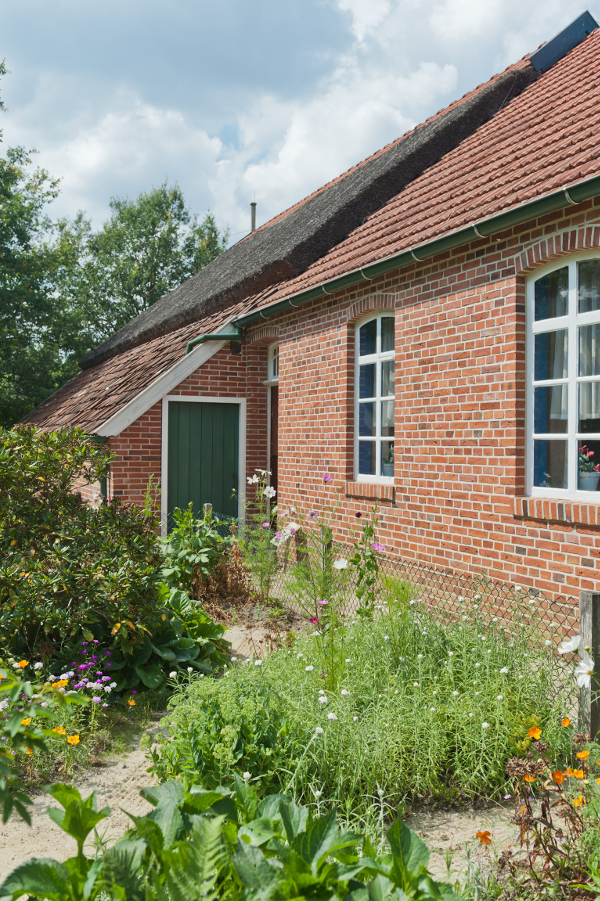
An Educated Jewel of a Kitchen Garden
Farmer Wübbe Meyer’s house from Firrel in Ostfriesland was built in 1903. Exactly 100 years later, it arrived at the open-air museum with all of its outbuildings, barns, kitchen building and chicken pen. The family with many children lived in a humble manner at the edge of the Aurich Wiesmoor. Only after an “inviting” door had first been built on the street side of the house in the Fifties, would a small decorative front yard of roughly 9×5 meters have been created. A barbed wire fence built to protect against rabbits surrounded, and still surrounds, the ornamental garden even today. A flowerbed enclosed with aubrietia was located in the middle of this garden. Ornamental garden flowers, like roses, dahlias, violas and forget-me-nots were also found in this little ornamental garden. Despite the simple lifestyle, potted plants were not missing from the window banks in the house. Flowers were the friends of the lady of the house and her children, whether in the garden or the living room.

Well-presented Meals
Gardens at the Firrel farms were primarily used as kitchen gardens for feeding the family. A small orchard with a variety of fruit trees on the side of house provided the family with seasonal fruit. The large vegetable garden found behind the house was extensively farmed. Potatoes as well as green and string beans were among the types of primary vegetables that were farmed annually. The harvested beans were hung from lines and dried in the room. In this manner, one took on provisions against the winter. One had a cellar in the basement of the house for storing the potato harvests free of frost. White lightning and other self-brewed spirits could be stored in preserving jars in the little milk cellar, and preserved under the shelves.
